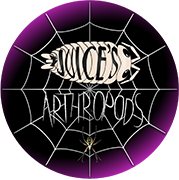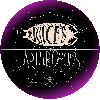Bioactive for Beginners
Bioactive enclosures create self-sustaining habitats for reptiles/arthropods through species-appropriate substrate, clean-up crews (springtails/isopods), natural elements (Magnolia leaves, oak wood), cork bark hardscape, and optional live plants added after acclimation. When established, they require minimal maintenance while promoting natural behaviors.
Introduction to Bioactive Systems
Creating a bioactive enclosure is an excellent way to provide your reptile or arthropod with a naturalistic, self-sustaining habitat. By mimicking natural ecosystems, bioactive setups utilize living organisms to help manage waste, support plant growth and maintain overall enclosure health. For beginners, setting up a successful bioactive enclosure starts with choosing the right substrate tailored to the species’ environmental needs.
Choosing the Right Substrate
Moisture-Dependent Species Options
For moisture-dependent species such as many tarantulas and invertebrates, a substrate like Terry’s Topshelf Bioactive Blend provides ideal moisture retention, structure, and microbial support through a mix of peat moss, sandy loam, composts, sand, and vermiculite.
Arid Environment Substrates
Terry’s Arid Arachnid Blend includes calcium-bearing clay for arid-dwelling species, which helps maintain substrate integrity and supports springtail populations in otherwise dry conditions.
Decomposition-Focused Blends
Royal Soil offers a rich blend of organic matter, composts, and wood pulp to promote a thriving biological soil environment for enclosures focused on detritivores or overall decomposition.
Essential Clean-Up Crews
Springtails: The ESSENTIAL Helpers
A healthy bioactive setup also requires a clean-up crew. Springtails are essential microfauna that consume mold, waste, and decaying matter, helping to maintain cleanliness and reduce harmful buildup.
Isopods: Benefits and Limitations
In more humid setups, isopods are an excellent addition, feeding on decomposing material and aerating the soil. However, they are not recommended for tarantula enclosures, as their activity may disturb vulnerable tarantulas during molting periods.
Natural Elements and Enrichment
Sustainable Carbon Sources
Natural elements such as thoroughly sterilized, pesticide-free Magnolia leaves contribute visual appeal and ecological function. These leaves decompose slowly, enriching the substrate while providing shelter and a food source for microfauna. Magnolia seed pods offer additional structure within the soil and act as micro-habitats for detritivores, breaking down gradually to further support microbial life. Dried oak wood and similar materials also provide long-term carbon sources essential to maintaining a balanced soil biome.
Hardscape Features
The Versatility of Cork Bark
Hardscape features like cork bark rounds or cork bark flats are a staple in bioactive enclosures. Lightweight, mold-resistant, and visually natural, cork bark is an excellent cover, climbing surface, or structural support for burrowing species. It helps create essential hiding spaces while enhancing the enclosure’s aesthetics.
Live Plants (Optional)
Benefits and Integration Timing
While not required, adding live plants can significantly benefit a bioactive setup. Plants assist with waste absorption, oxygenate the environment, and strengthen the soil microbiome. However, it’s important to allow your animal plenty of time to acclimate and adjust to its enclosure before introducing live plants. This ensures the safety of both the animal and the developing biosphere, minimizing stress and reducing the risk of disrupting the balance of your bioactive system. Once established and you have dialed in its care, live plants can thrive alongside your animal, completing a truly natural and visually striking habitat.
Wrapping Up
With the right materials and thoughtful planning, a bioactive enclosure becomes a thriving, low-maintenance ecosystem that supports animal wellness, encourages natural behavior, and brings a dynamic piece of nature into your care space.

